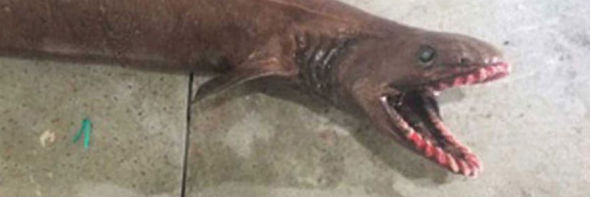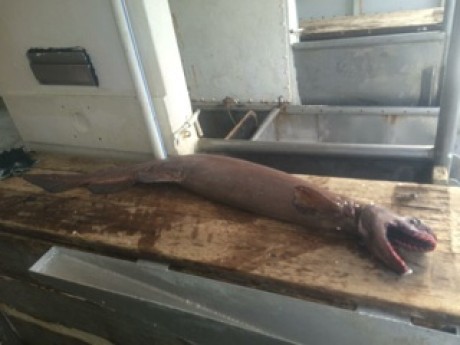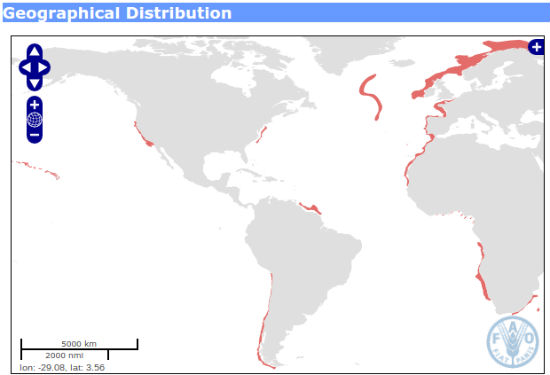
In January 2015, a photograph said to be a picture of a rare frilled shark started circulating via social media:

Since many social media posts featured an image of this odd-looking creature but little information about its origins, many viewers were left wondering whether the frilled shark was a real animal. The sea creature (taxonomically known as Chlamydoselachus anguineus and referred to by some as a "living fossil") is indeed real, an eel-like shark whose ancestry dates back

The specimen pictured above was caught by a trawling vessel off the coast of Victoria, Australia. The shark was offered to the Commonwealth Scientific and Industrial Research Organization (CSIRO), but since that group already had a frilled shark specimen, this one was passed along to the South East Trawl Fishing Industry Association (SETFIA):
Seldom observed, the frilled shark may capture prey by bending its body and lunging forward like a snake. The long, extremely flexible jaws enable it to swallow prey whole, while its 300 needle-shaped teeth aligned in
Exhibiting several primitive features, the frilled shark is often termed a "living fossil". It reaches a length of 2.0m and has a dark brown, eel-like body with the dorsal, pelvic, and anal fins placed far back. Its common name comes from the frilly or fringed appearance of its six pairs of gill slits.
The International Union for Conservation of Nature (IUCN) has listed the frilled shark as a "Near Threatened" species. While there is no solid information about the population size of the Chlamydoselachus anguineus, the IUCN fears the expansion of deepwater fisheries could endanger the species:
Not a targeted fisheries species, but taken as bycatch in bottom and midwater trawls, deep-set longlines, and in deep-set gill nets. No population baseline or trends available. Some concern that increased deepwater fisheries effort (geographically and in depth range) may increase levels of bycatch. The bycatch is sometimes utilized for fishmeal and for meat. Occasionally kept in aquaria (Japan).
Last updated: 21 January 2015
